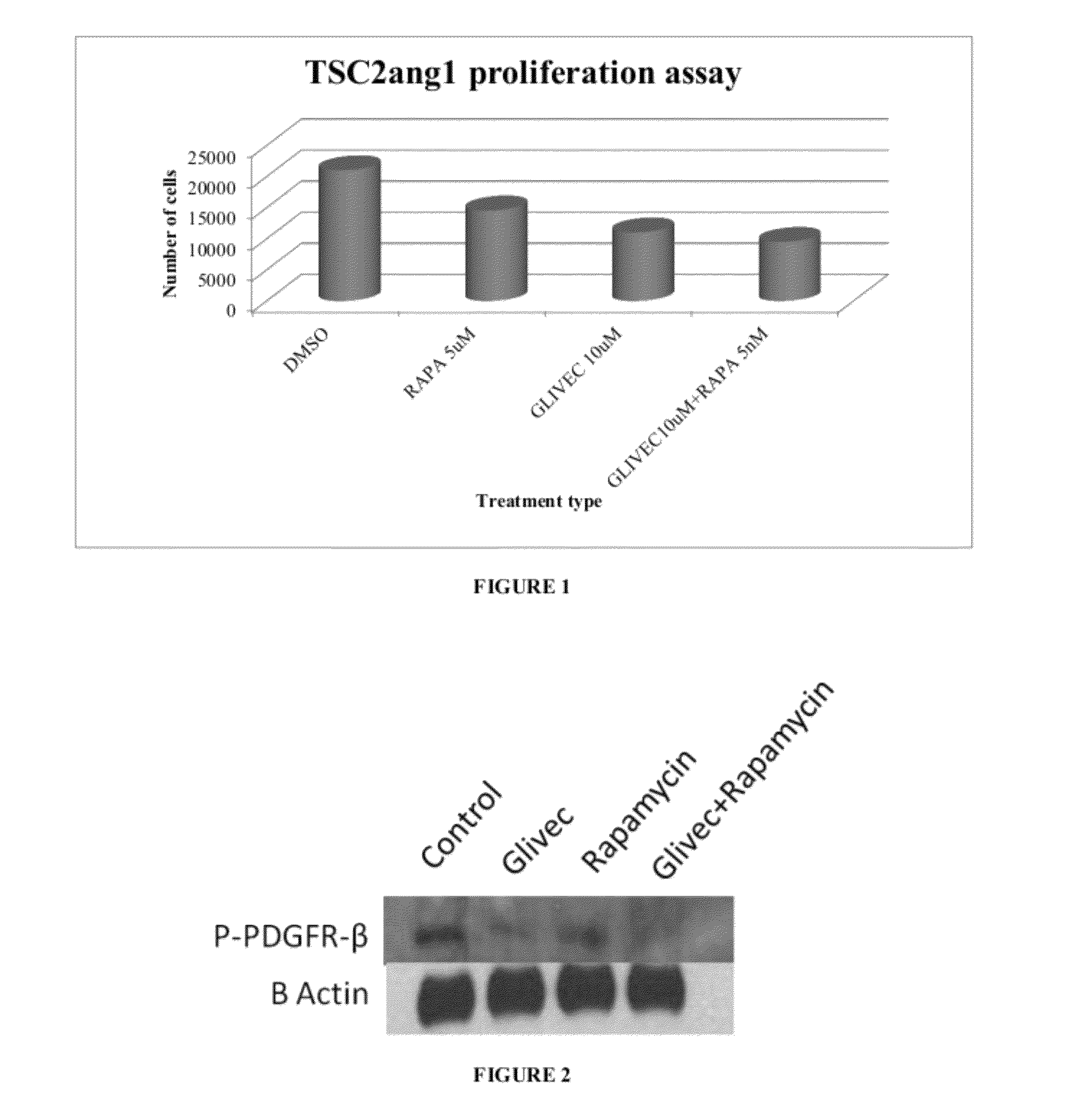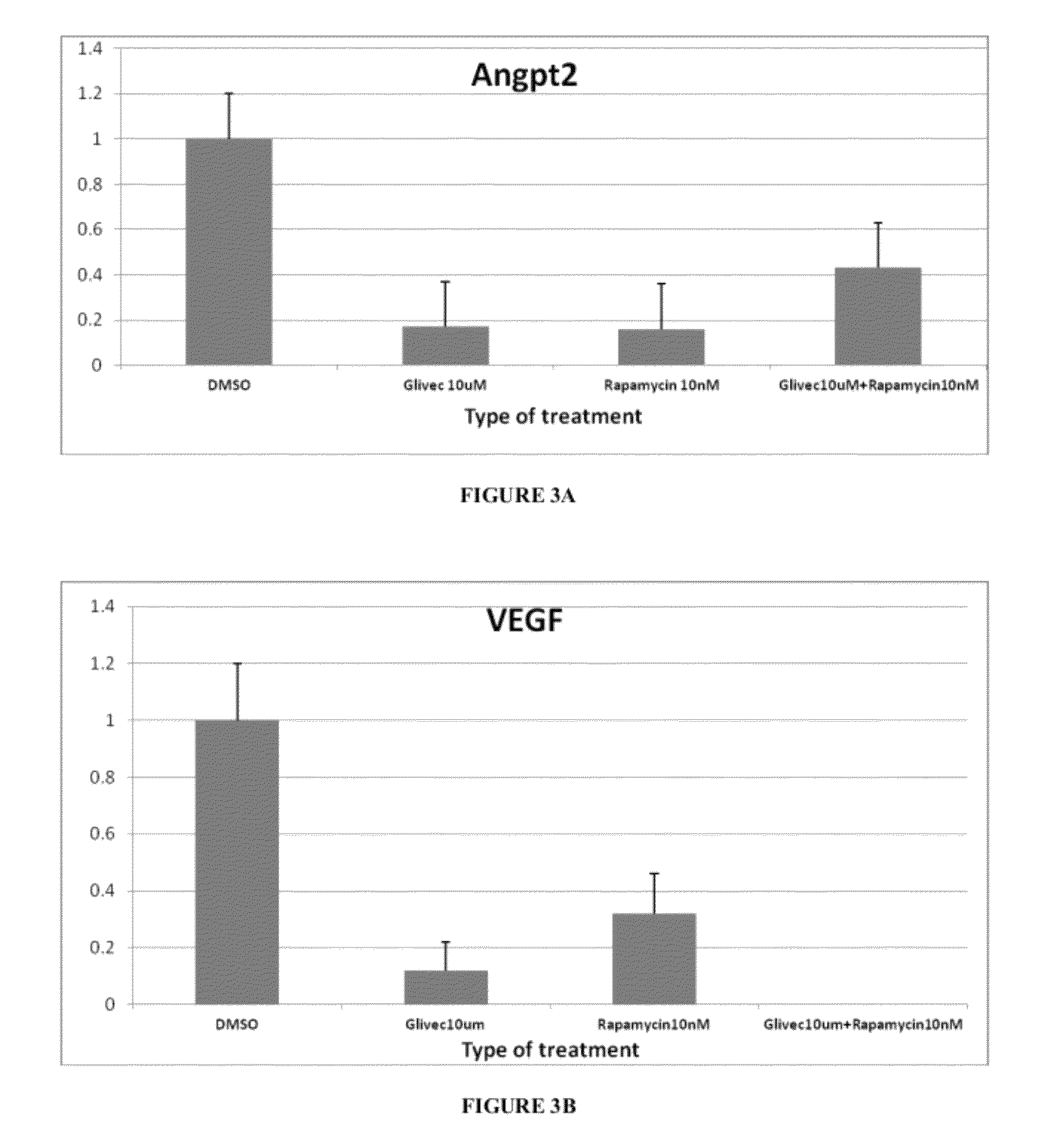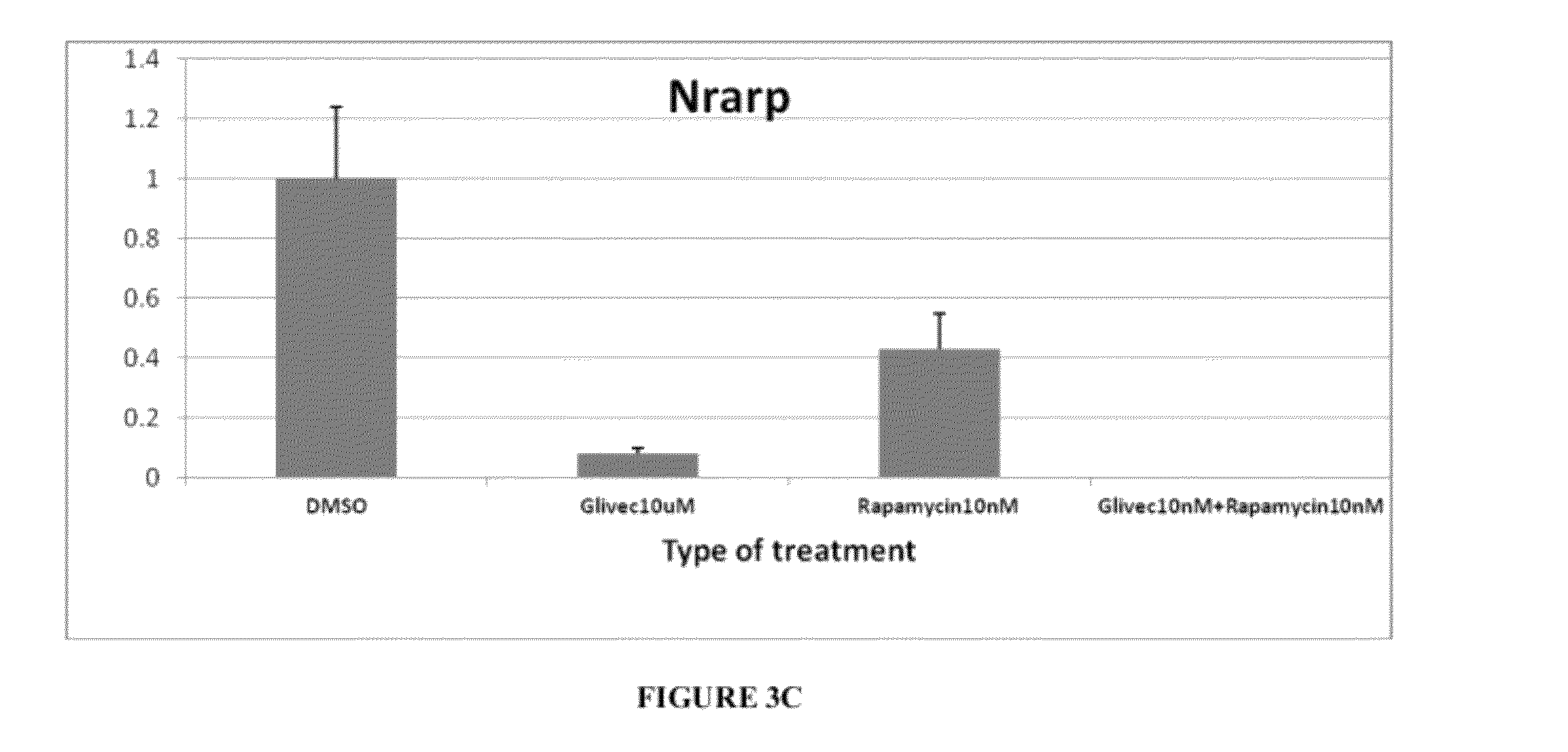Combination therapy
a technology of conjugation therapy and sclerosis, applied in the field of tuberous sclerosis treatment methods, can solve problems such as significant morbidity
- Summary
- Abstract
- Description
- Claims
- Application Information
AI Technical Summary
Benefits of technology
Problems solved by technology
Method used
Image
Examples
example 1
Sirolimus and Imatinib Combination Therapy Inhibits TSC2 Cell Proliferation
[0065]A proliferation assay with Tsc2 cells indicated a decrease in the viable cell numbers when treated independently with either rapamycin (5 nM) or imatinib (10 μM) for 24 hours. 104 tsc2ang1 cells per well were plated in 24-well dishes in triplicate. The next day, fresh medium containing the compounds or vehicle controls was added. Cells were incubated at 37° C. Tsc2ang1 (ATCC CRL 2620) is a murine cell line derived from a cutaneous sarcoma that arose in the extremity of a mouse heterozygous for tsc2; these mice develop cutaneous sarcomas at a frequency of about 10 to 15%. The cells were cultured in complete DMEM medium supplemented with 10% FBS (Sigma Aldrich, St Louis, Mo.). Combination treatment of rapamycin (5 nM) and imatinib (10 μM) showed a significant decrease in the viable cell number compared with DMSO treated control cells (FIG. 1). Cells were treated with vehicle control (DMSO), rapamycin (5 n...
example 2
Sirolimus and Imatinib Combination Therapy Inhibits Activation of PDGFRβ Tsc2 ang1 Cells
[0066]The impact of imatinib (10 μm), rapamycin (10 nM), and a combination of rapamycin and imatinib on the phosphorylated PDGFR-β signaling pathway was tested in Tsc2ang1cells. Treatment of tsc2ang1 cells with rapamycin monotherapy led to upregulation of PDGFR β and increased phosphorylation at Tyr-1009 compared with DMSO control Imatinib treatment, however, led to a downregulation of PDGFR β phosphorylation; this decrease was maintained in the presence of rapamycin (FIG. 2). The upregulation of PDGFRβ by rapamycin monotherapy suggests that the activation of PDGFRβ is a compensatory mechanism to the mTOR blockade.
example 3
Sirolimus and Imatinib Combination Therapy's Effect on Angiogenic Mediators
[0067]Tsc2ang1 cells were treated with control (DMSO), rapamycin (5 nM), imatinib (10 μM), and imatinib (10 μM)+rapamycin (5 nM) for 24 hours. Total RNA was then extracted and the levels of expression of the angiogenic genes Angiopoietin-2 (Angpt2) (FIG. 3a), NOTCH-regulated ankyrin repeat protein (Nrarp) (FIG. 3c), and Vascular endothelial growth factor (VEGF) (FIG. 3b) were measured by real-time PCR. Significant downregulation of Angpt2 (p<0.001), Nrarp (p<0.001), and VEGF (p<0.05) levels were observed in the imatinib (10 μM)+rapamycin (5 nM) combination therapy group. Total RNA was extracted from cell pellets pooled from two identical and independent experiments using the RNeasy mini column (Qiagen). 10 μg total RNA pools from different experimental conditions were independently and randomly labeled with either Cy3 or Cy5 fluorophores using the Agilent Fluorescent Direct Label kit (Agilent Technologies). L...
PUM
| Property | Measurement | Unit |
|---|---|---|
| Mass | aaaaa | aaaaa |
| Mass | aaaaa | aaaaa |
| Mass | aaaaa | aaaaa |
Abstract
Description
Claims
Application Information
 Login to View More
Login to View More - R&D
- Intellectual Property
- Life Sciences
- Materials
- Tech Scout
- Unparalleled Data Quality
- Higher Quality Content
- 60% Fewer Hallucinations
Browse by: Latest US Patents, China's latest patents, Technical Efficacy Thesaurus, Application Domain, Technology Topic, Popular Technical Reports.
© 2025 PatSnap. All rights reserved.Legal|Privacy policy|Modern Slavery Act Transparency Statement|Sitemap|About US| Contact US: help@patsnap.com



